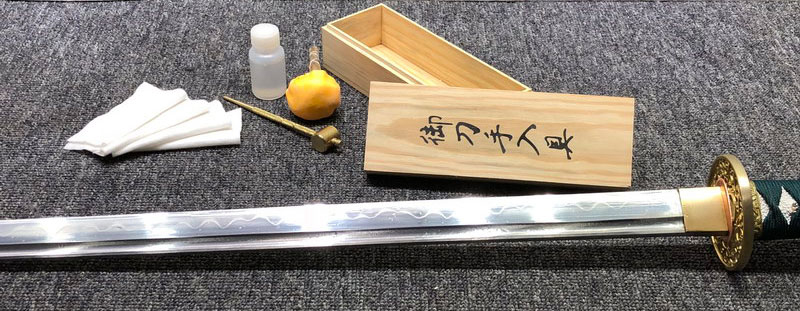PRECAUTIONS FOR CARING FOR A KATANA


The traditional Japanese katana is one of the most popular swords in the world. It is owned by martial arts practitioners and collectors, has a single-edged curved blade, and is usually made of high carbon steel. However, like other swords, the owner should take certain precautions to maintain the strength and integrity of the katana.
Remove it From the Scabbard Regularly
Suppose you store the katana in a leather saya, be sure to remove it regularly. When a sword is stored in a leather saya for a long time, it creates a humid environment and at the same time promotes rust and corrosion. This is because the leather absorbs moisture in the air and reaches the blade of katana.
Do not touch the blade with your fingers
Try to avoid touching the blade of the katana with your fingers. Although this will not cause any damage immediately, it will promote the formation of rust and corrosion in the future. You see, the sweat and natural oils on the fingers will transfer to the blade, and if it is not cleaned in time, it will cause it to rust.
Oil the blade
One of the most important steps to protect and preserve the katana is to oil the blade. Just as wax protects the clear coating of a car from moisture damage, so does the oil on a samurai sword.
Of course, you can use dozens of different oils and oil products on the japanese sword.
Don't talk about your katana
What's the problem with talking about your katana? This is an ancient etiquette designed to protect the blade from accidental moisture. If you speak with a katana under your head, some of your saliva may get on the blade—and only a small amount of saliva is needed to start the destructive chain of corrosion cycle.
Oil the handle
In addition to oiling the blade of the katana, you should also oil the wooden handle. Wood is highly porous and will absorb or release moisture, depending on the surrounding humidity. If your katana has a wooden handle and you store it in a place with low humidity, the wooden handle may dry out and eventually crack. Fortunately, this type of problem can be easily avoided by oiling the handle.
Don't forget to check your katana
You should remove the katana from the warehouse for a brief inspection at least once a week. During this inspection, please check whether there is rust, whether the metal is oxidized, or whether there is physical chipping or other damage.
Discover the many attractive options available for Katana swords and custom swords.
Want a unique sword? Feel free to contact us:
Phone: 086 13739276006
Email: [email protected]
Website: www.hanbonforge.com
Custom Sword Page: www.hanbonforge.com/CUSTOM-SWORDS/Custom-Your-Own-Swords

Leave a Comment